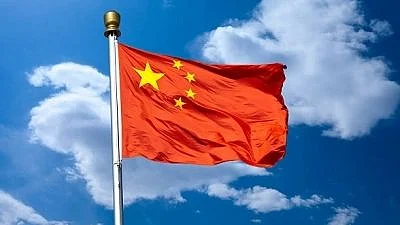As New Delhi hosts the 13th BRICS Summit today (9 September) — the third by India and the second virtual event since the last summit at Moscow — regional and global security, pandemic disruption in growth rates and supply chain mechanism restoration, Afghanistan developments, and other issues are expected to the come to the fore.
China’s role in the BRICS is expected to be crucial as it’s the largest economy in the grouping, with aspirations to surpass the United States in economy, military and regional and global leadership. Associating with BRICS provides China with a cushion to counter the vagaries of the international system, deflect the US ire, and expand Beijing’s influence in different continents.
What ‘Emerging Economies’?
One, China maintained 2.3 per cent economic growth despite being the epicentre of the COVID-19 outbreak spread early last year. The resurgence of the virus in over 27 cities across China in the last few weeks puts a spanner in such growth projections. In fact, the acronym of “emerging economies” for the BRICS has become problematic as none of these five countries has shown any spectacular growth, although the potential for growth exists.
Two, as growth rates plummeted across the board, the recent discussions in BRICS on evolving their own credit rating agency have also taken a backseat. This is partly related to the emerging conflict between China and the United States on tariffs, intellectual property rights and business curbs.
Three, the New Development Bank of the BRICS, mooted at the New Delhi summit in 2012, has expanded into 76 crucial infrastructure projects investing over $28 billion. These are beneficial for China so as to utilise its excess capacities in finance, technical personnel, steel, cement and other products. As China’s outreach programme of the Belt and Road Initiative (BRI) has taken a beating with the pandemic, NDB projects offer a useful outlet to China.
Energy, International Finance and Security Fronts
Fourthly, BRICS combines some of the largest energy producers (Russia) and consumers (India and China). While the raging pandemic dented heavily into this sector, Russia suffered the most as its economy is heavily dependent on energy exports and western sanctions on the Crimean issue have hit such exports. China chipped in with energy imports from Russia.
Five, China benefited from the BRICS agenda of multipolarity and reorganisation of the Bretton Woods institutions.
For instance, China’s voting rights in the International Monetary Fund increased substantially and so have its Special Drawing Rights.
These provided China with the much-needed space in international finance. While China’s position on the UN Security Council reorganisation is still vague, reform of global finance benefited China.
Six, regional and global security issues are prominently discussed in the BRICS summit meetings. Afghanistan developments are expected to cast a shadow on the BRICS cooperation with China’s proxy rule in Kabul through Pakistan’s ISI and its implications for regional domination efforts in South Asia.
China’s Expansionist Policies
Seven, China’s expansionist policies are dividing the BRICS format. Intra-BRICS differences have increased and the underlying tensions are coming to the fore recently, threatening the cohesion of the grouping. China’s party-state backed Global Times even mooted the idea of cancelling the Indian membership in the BRICS (and the SCO) due to the ongoing territorial dispute, as well as India’s closeness to the US.
China’s irredentist claims have created differences with Russia and India. A prominent Chinese media person claimed Vladivostok was a part of China.
Chinese demographic influx into Khabarovsk and Krai regions in Siberia, restrictions on fisheries export, besides rampant smuggling activities, have been resented.
China’s military advance in the western sector of the border with India, despite the presence of confidence-building protocols, and the subsequent killing of 20 Indian soldiers at Galwan in June 2020, has deepened strategic mutual mistrust with New Delhi. In the last BRICS virtual meeting organised by Russia, India reiterated its opposition to the violation of sovereignty principles. China’s regional dominance efforts in Nepal, Sri Lanka, Pakistan and Afghanistan have further threatened India’s position in South Asia.
Cashing in on the pandemic, China had sold or donated over 80 million doses of vaccines to counter the current pandemic in 60 countries. While the effectiveness of such vaccines, delay in supplies and the geopolitical interests of China were criticised by some recipient countries, BRICS partner Brazil, which witnessed a surge in pandemic cases, had suspended the use of 12 million doses of China-supplied Sinovac. On the other hand, India and South Africa coordinated their efforts at the World Trade Organisation (WTO) to relax patents on western-produced vaccines.
However, despite these differences, Beijing is expected to actively participate in the current round of summit deliberations. Since the Trump administration, the US has termed China as a “strategic competitor” and has expanded areas of friction from trade to Tibet, Taiwan, Xinjiang, South China Sea and other domains, making China turn towards the time-tested “united front” tactics of clubbing up with like-minded countries, specifically inter-continental initiatives such as the BRICS.
(Srikanth Kondapalli is Professor in Chinese Studies at Jawaharlal Nehru University. He co-edited a volume on “China and the BRICS – Setting Up a Different Kitchen”. This is an opinion piece and the views expressed above are the author’s own. The Quint neither endorses nor is responsible for the same.)
